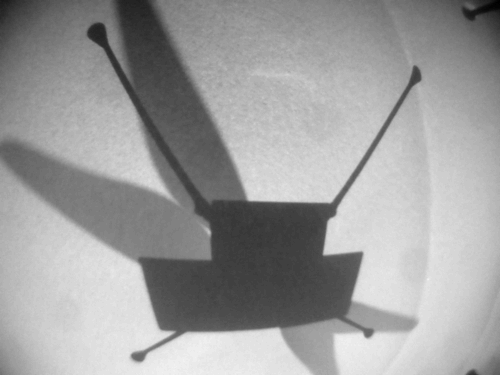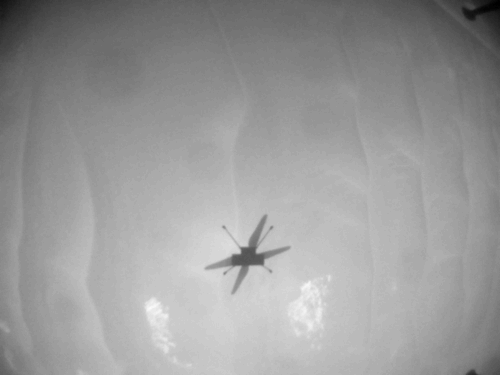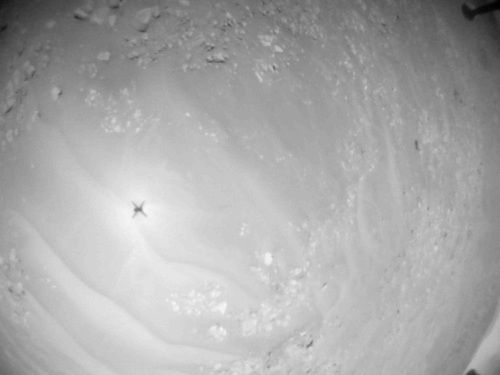With all that’s transpiring on Earth, sometimes we forget there’s a helicopter flying around Mars.
NASA‘s Ingenuity helicopter — the first craft to make a powered, controlled flight on another planet — made its whopping 64th flight (engineers hoped it might fly five times, if at all) in late October. The experimental craft, with four-foot-long rotor blades that spin a blazing 2,400 revolutions every minute, beamed back footage of its flight, during which it journeyed 1,348 feet (411 meters) across the Martian desert.
With the bright sun overhead, the craft cast shadows on the extraterrestrial ground, creating the sci-fi-like imagery you see below.
Ingenuity captured these shots using its navigation camera, which is “mounted in the helicopter’s fuselage and pointed directly downward to track the ground during flight,” NASA explains.

The Ingenuity helicopter hovering just above the ground. You can see two of its actual legs in the right corners.
Credit: NASA / JPL-Caltech

The Ingenuity helicopter in flight above the Martian surface.
Credit: NASA / JPL-Caltech

The small Ingenuity shadow on the ground as the craft reached a higher altitude.
Credit: NASA / JPL-Caltech
Want more science and tech news delivered straight to your inbox? Sign up for Mashable’s Light Speed newsletter today.
Putting these images together makes a vivid video of this Oct. 27 flight:
NASA’s car-sized Perseverance rover, with scouting assistance from Ingenuity, is on a mission largely devoted to finding signs of past primitive life on the Martian surface. This could mean telltale pieces of genetic material, or parts of a degraded cell.
So far, there’s no proof life ever existed on Mars — or anywhere beyond Earth, for that matter. But these robots will continue sleuthing the desert, particularly dried-up rivers, streams, and lakebeds where life could have persisted in the soils. Ingenuity and Perseverance are exploring Mars’ Jezero Crater, a river delta that planetary scientists think once teemed with water.
One day, however, scientists may also have the opportunity to look deep below the Martian ground, a protected place that could have hosted life for much longer than the profoundly dry, cold, and irradiated surface. Who knows what we’ll find.

